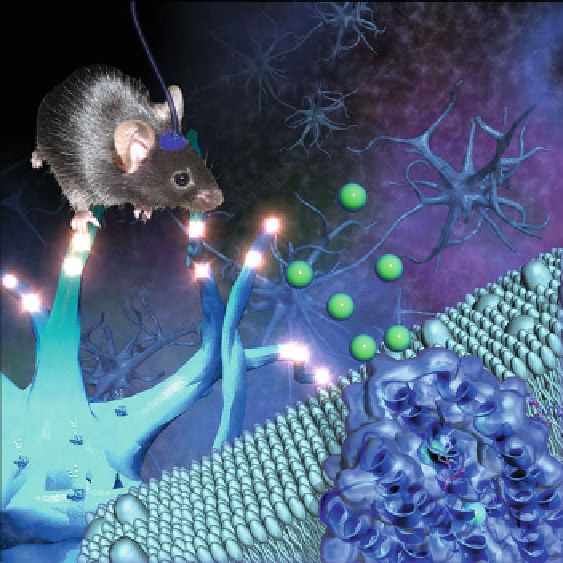Biomedical Engineering Reference
In-Depth Information
Fig. 8.1
Concept of optogenetics. Rhodopsin molecules (here, ChR2, shown on the membrane in
the foreground and on the neuron just behind it) are expressed in a particular type of neurons using
molecular tools such as viral vectors or transgenic animals. When a neuron is stimulated by light,
cations (
green
) enter the cell, which results in excitement of the ChR2-expressing neurons (shown
as bright spots in the dendrites). Optical fi bers, through which a stimulus light source is introduced,
are available for in vivo experiments
8.2
Revealing Dynamism Based on Physiological
and Pathological Neuronal Networks
8.2.1
Retina
Since retinal degeneration is characterized by the progressive loss of rod and cone
photoreceptors, targeting ChR2 to retinal ganglion cells (RGCs) or bipolar cells
could theoretically restore light sensitivity to mammalian models of retinal degen-
eration in which most rods and cones are genetically ablated (Tomita et al.
2009
).
Expression of ChR2 in either RGCs (Bi et al.
2006
) or bipolar cells (Lagali et al.
2008
) could indeed restore visual sensitivity in mice with mutations causing rod and
cone degeneration, as well as in rat models of retinal degeneration caused either by
genetic mutation (Tomita et al.
2010
) or toxic light exposure (Tomita et al.
2009
).

